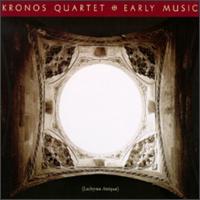skip to main |
skip to sidebar
Sakoku (鎖国, lit. locked country, or chained country) was the foreign relations policy of Japan under which no foreigner could enter nor could any Japanese leave the country on penalty of death. The policy was enacted by the Tokugawa shogunate under Tokugawa Iemitsu through a number of edicts and policies from 1633-1639 and remained in effect until 1853 with the arrival of Commodore Matthew Perry and the opening of Japan. It was still illegal to leave Japan until the Meiji Restoration (1868). -- Wikipedia : Sakoku
"The Sakoku mentality has roots in Japan's geography and history. Over the centuries, Japan's geographic isolation created a homogeneous culture and an island-nation mentality, or shimaguni konjo. The natural geographic isolation also forged a sense of strict distinction betweeh uchi (inside) and soto (outside) among the Japanese. In addition to geography, the Tokugawa Shogunate government's sakoku policy from 1639 to 1868 reinforced the Japanese to live separately from the rest of the world and enabled them to develop a distinct culture and mentality. Although the original geographic and self-imposed isolation no longer exist, that legacy still ingers as the sakoku mentality, characterized by exclusiveness and parochialism, and it constitutes the cultural determinant of the Japanese mind-set and behavior."
-- Mayumi Ito 'Globalization of Japan'

"For two centuries after 1640, the official Japanese policy towards the outside world was known as sakoku (’closed country’), by which both Japanese leaving the country and foreigners entering it could expect the death penalty.
Although not quite as harshly absolute as that, isolationism prevailed until American commodore Matthew Perry’s Black Fleet sailed into Uraga harbour in 1853, forcing Japan to open up, first to commerce with the US, later to trade with other western countries.
This Japanese world map circa 1850, gives an impression of the country’s view of its place in the world on the verge of its forced reintegration into the international community. It is an intriguing mix of foreign knowledge and native perspective.
The Japanese archipelago is placed self-confidently at the centre of the map, banishing Europe from its usual central place to a marginal one, at the western edge. The American continent is banished to the map’s far eastern side.
The continents, each assigned a different colour, are generally in the right position vis-a-vis each other, but their contours are very poorly rendered, as if the map was not drawn directly from a contemporary western example, but via a system of Chinese whispers ...
However flawed it may be, what this map proves by getting the general gist of the world’s geography right, is that Japan was not entirely cut off from outside knowledge. Indeed, during the whole period of sakoku, severely restricted but nonetheless significant trading and other contacts were maintained with a handful of privileged partners.
The Dutch, who were allowed to maintain a foothold on the small island of Deshima, were Japan’s main source for western scientific knowledge, including cartography. This allowed Japan to keep up with the general development of geography, even if sometimes, as in this case, only very generally."
-- Strange Maps













No comments:
Post a Comment